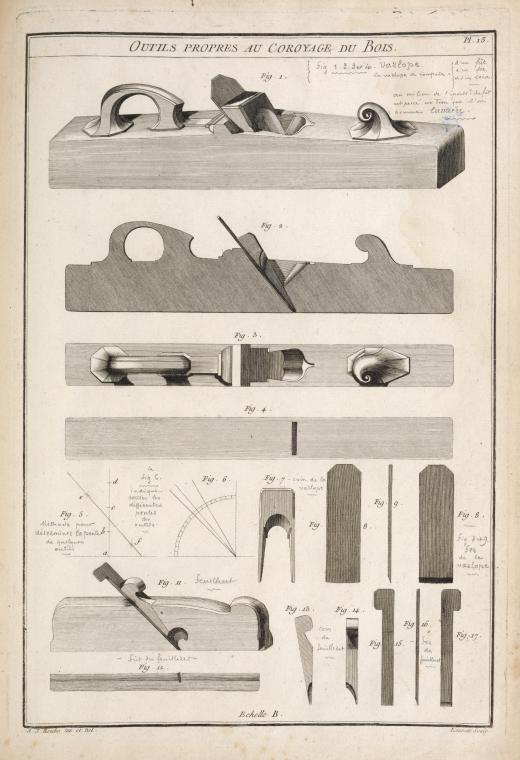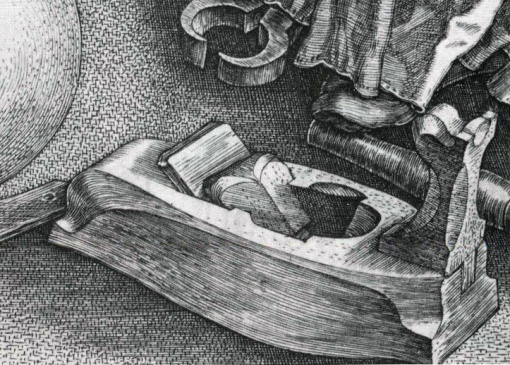G S Haydon
Established Member
- Joined
- 24 Apr 2013
- Messages
- 1,667
- Reaction score
- 222
Custard, you have the reality of the situation very neatly summed up!

Certainly - but if the thing was decently machined in the first place it would be unnecessary.worn thumbs":1rc5sirm said:phil.p":1rc5sirm said:"The bailey design is exceptional. Modern low-cost versions of it are not." - D_W
I have a new No.4 (I picked it out of the scrap metal skip at the dump) - out of curiosity I measured the width of the mouth. It was exactly half as wide again as the mouth of my old No.6. - not really ideal.
If you adjust the frog,you can have just about any effective cutting width you want.A bit of air behind the ground bevel won't make any difference.Maybe if the original owner of the plane in the skip had known this and how to sharpen the plane,it wouldn't have been dumped.
Rhyolith":17xtbmsa said:One thing I find interesting about the new Stanley Sweetheart Planes is that their smoother is all one casting: image off google if your not familiar with this tool: http://assets.rockler.com/media/catalog ... 5-1000.jpg



Interesting thanks.Rhyolith":2jvydm9c said:Well in the case of LN they leave a substantially better finish on the wood and will perform better when your working with difficult wood/grain. A friend kept stealing my No.8 in the boatyard to use it on very large knotted oak keels, which no other plane (and he had access to plenty) would do neatly. Though my old Record No.4 very nearly matches it for finish quality, it does not fair as well in the rough grain situation (due to the thin blade I think). They are also easier to set up (all the adjustments are smoother and easier to use), though this is not true for the LN block plane, which is a nightmare to set up (but works great when it is).
Harsh. Fair. But harsh :wink:Jelly":2jvydm9c said:Eventually JFHC gives up making planes as being a silly idea and puts their investment in a high-tech foundry and machine shop to use making parts for Rolls Royce to sell to the Chinese to sell to the Japanese to re-establish the nuclear industry in the UK, so the French can run it.
Sellers has mentioned a number of times that (in the mid 60s as an apprentice) his Stanley No 4 cost him a weeks' wages. Could just be an anecdote/exaggeration of course (I don't have any data).D_W":2jvydm9c said:Near as I can tell, Stanley's planes cost about half a day's labor in the early 1900s, maybe closer to a day for an apprentice. that could easily be done these days if there was any volume, minus the rosewood handles, maybe.
I think that's so true for so many fields - professionals (i.e. those earning a living from their craft) use the tools they have, and amateurs (from the French "lover of") lust after, and spend, big money on boutique products.custard":2jvydm9c said:So you're right, LN, Veritas, Bridge City, Clifton, and all the rest is primarily about hobbyist use. Which brings about the paradox that some of the finest handtools ever made are only actually used for rudimentary coffee tables and simple garden planters. What a funny old world we live in!
Indeed. That's what a cabinet scraper's for, innit?CStanford":2yfusun4 said:I've never read of one halfway well-known professional woodworker who claims to get 100% tear out free performance from any plane at all times, places, and species. If somebody can point me to one, I'd be most appreciative. Edit, perhaps Graham Blackburn is the lone exception. Are there others?
Amazing that it seems to be only amateurs routinely achieving this level of performance.
CStanford":1kp7vcbz said:I've never read of one halfway well-known professional woodworker who claims to get 100% tear out free performance from any plane at all times, places, and species. If somebody can point me to one, I'd be most appreciative. Edit, perhaps Graham Blackburn is the lone exception. Are there others?
Amazing that it seems to be only amateurs routinely achieving this level of performance.
CStanford":3lemki60 said:I'd be happy to know more about Warren.
CStanford":g3duyi26 said:What church?
sploo":3t9owze7 said:Sellers has mentioned a number of times that (in the mid 60s as an apprentice) his Stanley No 4 cost him a weeks' wages. Could just be an anecdote/exaggeration of course (I don't have any data).
CStanford":n08q2oul said:Rather surprised it didn't somehow come up in the course of your conversations with him.
He may not be too far out sploo. I don't recall precise figures, but I do remember my first week's wage packet as a trainee cabinetmaker/ joiner in the 70s contained about £7 after tax and National Insurance deductions. The cost of a plane is hazier, but in my mind, something like a brand new Record No 4 (with a stained beech handle [prior to plastic, anyway]) was in the region of £4- £5. Don't quote me on the plane cost - and that really quite large spread between £4 and £5 surely indicates how unreliable my memory might be on this occasion, ha, ha. Slainte.sploo":2ay4iks8 said:Sellers has mentioned a number of times that (in the mid 60s as an apprentice) his Stanley No 4 cost him a weeks' wages. Could just be an anecdote/exaggeration of course (I don't have any data).
Enter your email address to join: